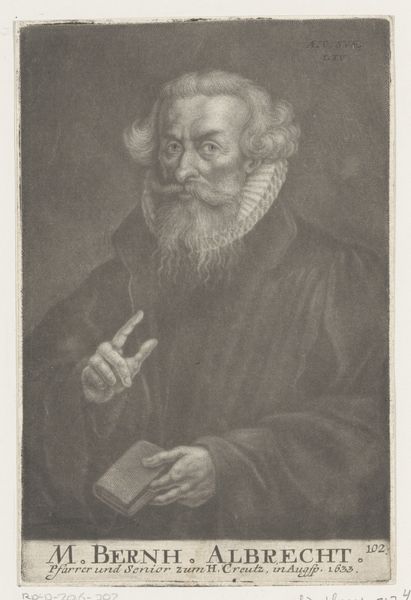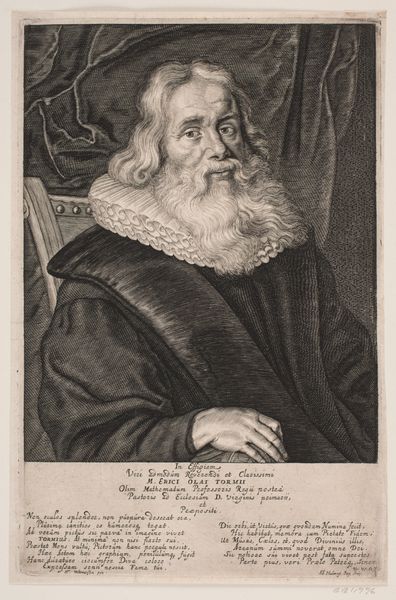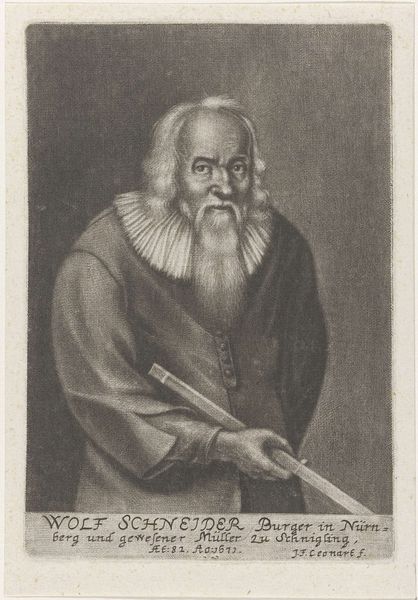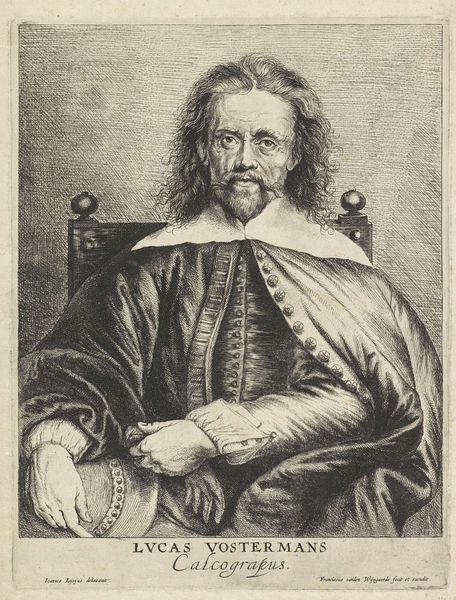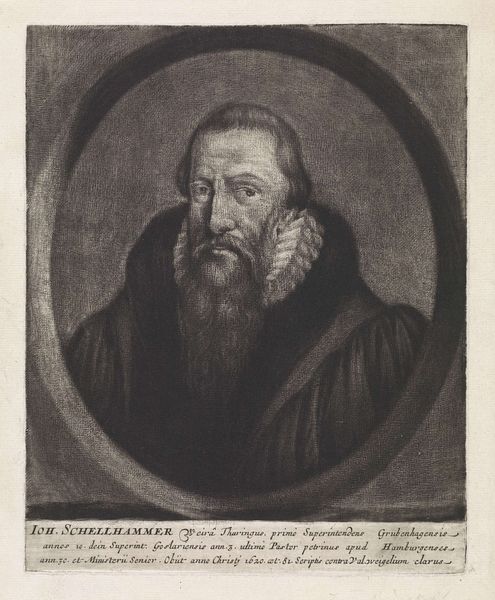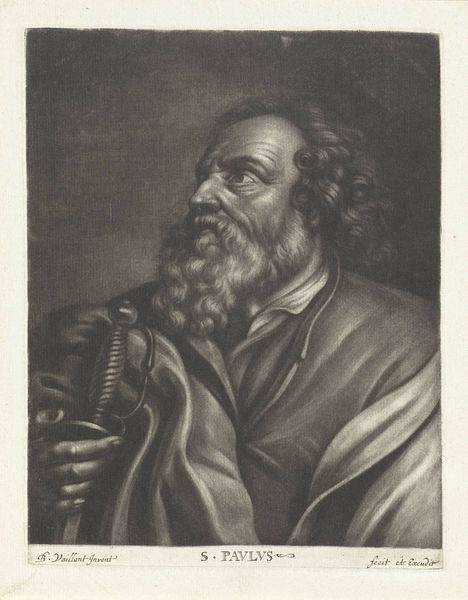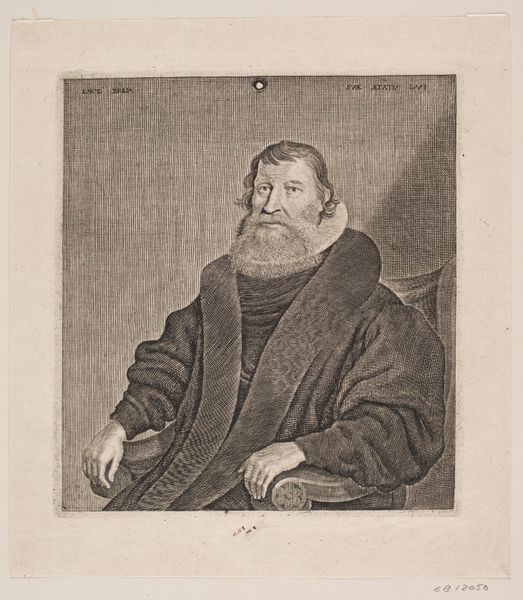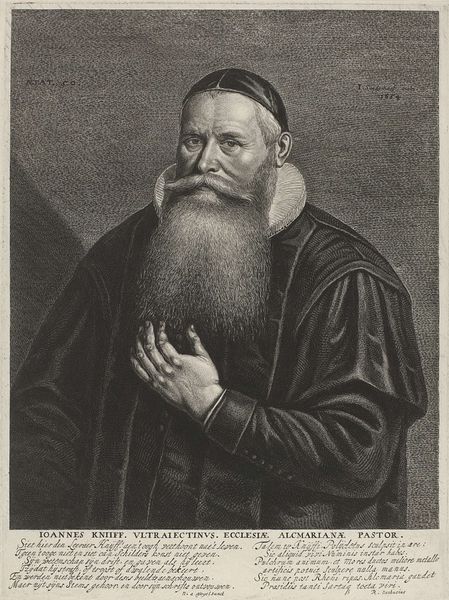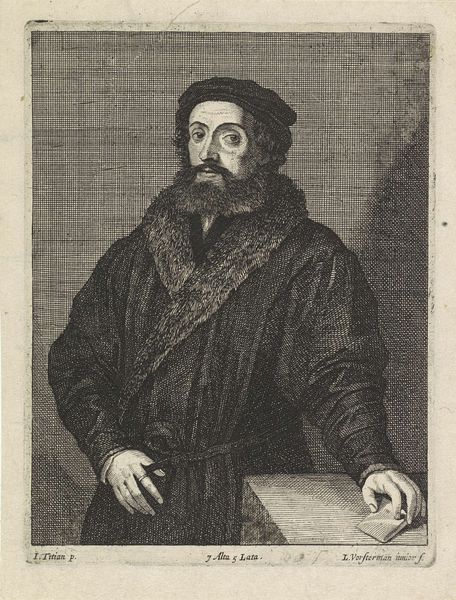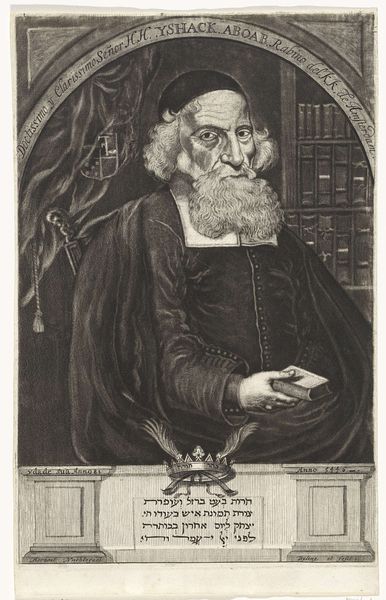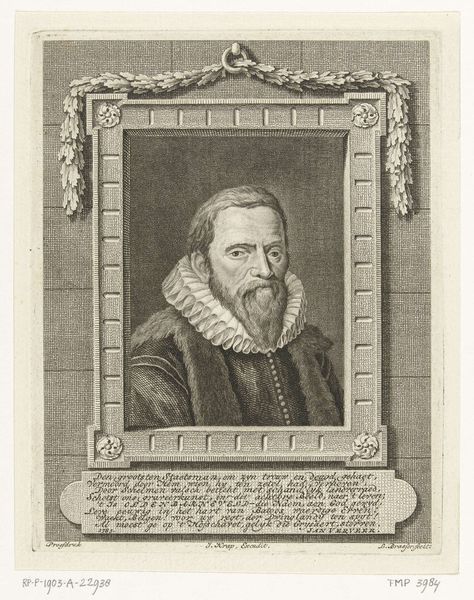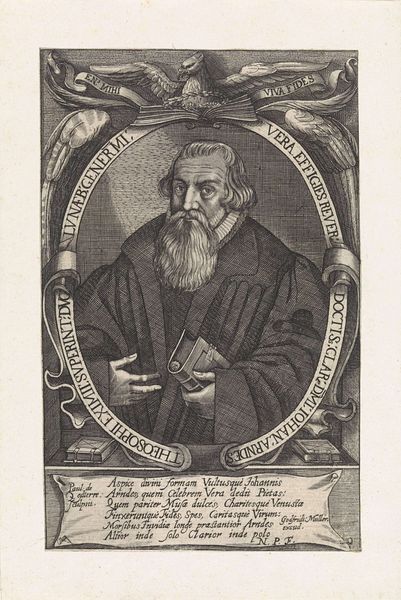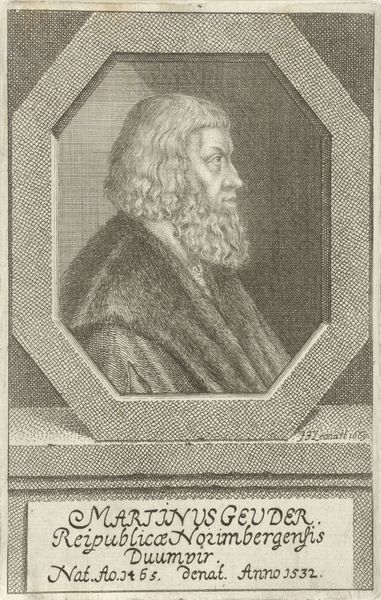
Portret van een onbekende man, mogelijk Nicol. Grey of Caspar Pusch 1669
engraving
portrait
baroque
dutch-golden-age
engraving
Dimensions: height 127 mm, width 94 mm
Copyright: Rijks Museum: Open Domain
Curator: Here we have a striking engraving from 1669 entitled "Portret van een onbekende man, mogelijk Nicol. Grey of Caspar Pusch," created by Johann Friedrich Leonard. Editor: Wow, okay, first impression: intense. Those eyes... they feel like they’re drilling right into you. The whole thing has a sort of brooding, serious vibe, don't you think? Like he holds secrets or has just witnessed a tragedy. Curator: Indeed. As a portrait, it adheres to several conventions typical of the Dutch Golden Age. Notice the dark background that pushes the figure forward, creating an intimate viewing experience. Editor: Intimate is one word for it! Ha! It also kind of makes him look like he’s floating in the ether. And those hands, fiddling with what looks like a small stone or jewel—nervous energy or deliberate contemplation? I wonder what's he up to? Curator: That's what's so fascinating about portraiture, particularly from this period. While striving to capture a likeness, there's often a performance of social status or intellectual prowess. It's designed to communicate power, learning, or piety. Editor: Power, eh? I get more of a “wizened scholar grappling with existential dread” vibe, personally. His beard has serious gravitas, no doubt. What does this kind of black and white printing style do to portray character and stature? Curator: Engraving lends itself to detail. Here we see incredibly fine lines and subtle shading that creates volume and texture, essential in a portrait aimed at realism. The use of light and shadow emphasizes his features, the furrow of his brow, and as you said, those penetrating eyes. It captures what they thought were markers of individual identity. Editor: And the lack of color. It all lends to this somberness. And this level of detail suggests the portrayed character was known by somebody who knew their every hair, but instead we are stuck at 'anonymous portrait'! It just adds a mystery, don't you think? It could be anybody and that's interesting for the ages. Curator: Precisely. Anonymous portraits have a unique role, speaking to the broader societal types as well. This image circulates through time, open to new audiences and contexts far beyond its initial purpose. Editor: So it morphs and speaks a different language to different viewers. Amazing how a guy and his beard printed 350 years ago can get ya thinking.
Comments
No comments
Be the first to comment and join the conversation on the ultimate creative platform.
